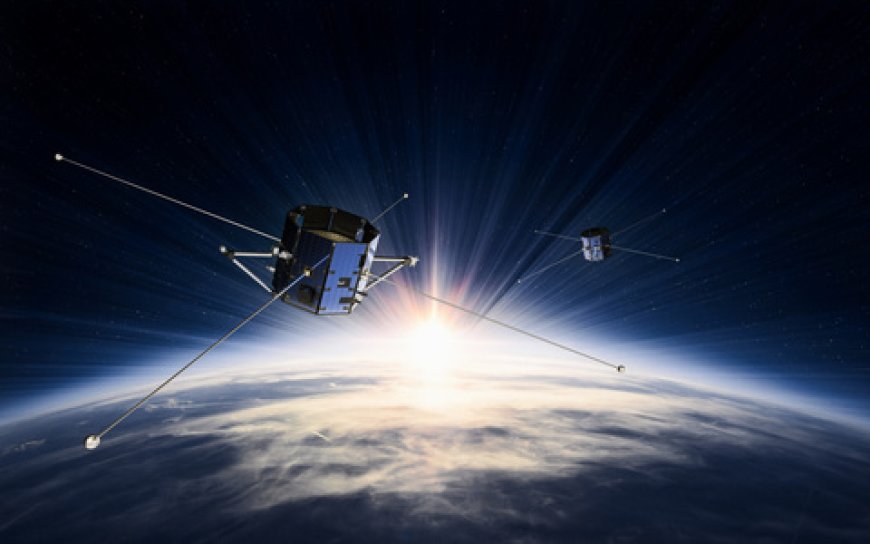University of Iowa-Led TRACERS Mission Featured in Space Science Reviews
Space Science Reviews is showcasing a collection of articles on the TRACERS mission led by the University of Iowa. The mission, funded by NASA and spearheaded by Dr. David Miles, aims to explore magnetic reconnection in Earth's cusp region. TRACERS will use two small satellites to gather data on plasma and magnetic fields over a 12-month primary mission, shedding light on the interaction between the solar wind and near-Earth space.

The journal Space Science Reviews is publishing a collection of articles about the University of Iowa-led Tandem Reconnection And Cusp Electrodynamics Reconnaissance Satellites (TRACERS) mission. This collection presents the science objectives of the mission, descriptions of the design and calibration of the plasma instruments, and other important aspects of the mission.
Dr. David Miles, associate professor in the UI Department of Physics and Astronomy, is leading NASA-funded mission, which aims to uncover how magnetic reconnection drives dynamic processes in Earth’s cusp region—a critical gateway between the solar wind and our planet’s magnetosphere.
TRACERS will use two identical small satellites flying in tandem low-Earth orbits to collect plasma and magnetic field data over a 12-month primary mission. These measurements will help scientists understand how spatial and temporal variations in reconnection influence the coupling between the solar wind and near-Earth space.
An overview of the mission can be found in this article: The Tandem Reconnection and Cusp Electrodynamics Reconnaissance Satellites (TRACERS) Mission. Mission design is described in The Tandem Reconnection and Cusp Electrodynamics Reconnaissance Satellites (TRACERS) Mission Design, while From the TRICE-2 Investigations to the TRACERS Mission shows how a the results of 2018 sounding rocket mission guided the science objectives of the TRACERS mission.
The articles describing instrumentation include:
The article Observing Cusp High-Altitude Reconnection and Electrodynamics: The TRACERS Student Rocket describes the Observing Cusp High-altitude Reconnection and Electrodynamics (OCHRE) mission, a student/early career researcher (ECR) focused sounding rocket that will fly as a compliment to the TRACERS satellites. The launch is scheduled in Winter 2026 from Andøya, Norway.
Miles expects additional articles to be published in the collection as the mission progresses.
The TRACERS mission is a collaborative effort involving the University of Iowa, Southwest Research Institute, UCLA, UC Berkeley, and Millennium Space Systems. It is dedicated to the late Professor Craig Kletzing, the mission’s original Principal Investigator and a longtime leader in space plasma research at Iowa.
TRACERS continues the department’s legacy of leadership in space physics and instrumentation and represents a major step forward in understanding the fundamental processes that shape space weather and Earth’s near-space environment.
According to the source: The University of Iowa.
What's Your Reaction?
 Like
0
Like
0
 Dislike
0
Dislike
0
 Love
0
Love
0
 Funny
0
Funny
0
 Angry
0
Angry
0
 Sad
0
Sad
0
 Wow
0
Wow
0




















































































































































































